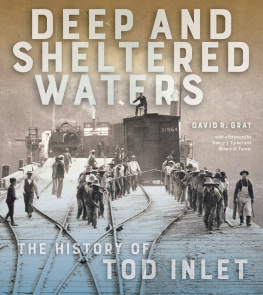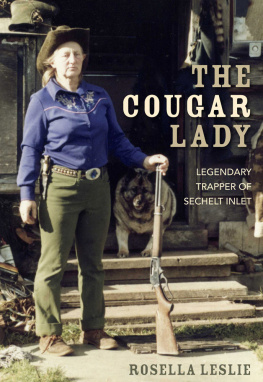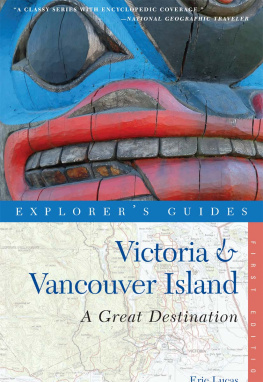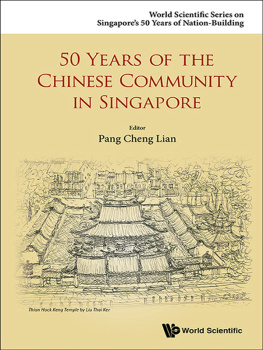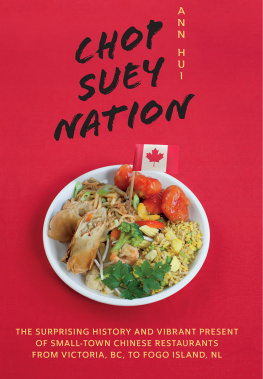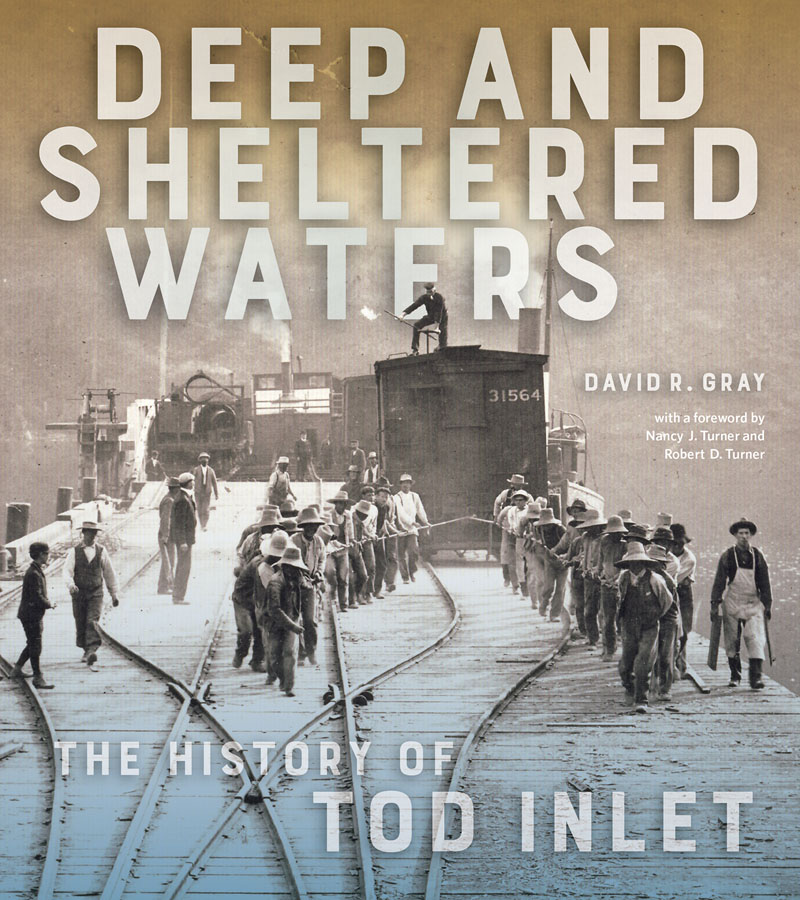

Deep and Sheltered Waters
The History of Tod Inlet
Copyright 2020 by David R. Gray
Foreword copyright 2020 by Nancy J. Turner and Robert D. Turner
Published by the Royal BC Museum, 675 Belleville Street, Victoria, British Columbia, V8W 9W2, Canada.
The Royal BC Museum is located on the traditional territories of the Lekwungen (Songhees and Xwsepsum Nations). We extend our appreciation for the opportunity to live and learn on this territory.
All rights reserved. No part of this book may be reproduced or transmitted in any form by any means without permission in writing from the publisher or a licence from Access Copyright, Toronto, Canada, except by a reviewer, who may quote brief passages in a review.
Cover and interior design by Lara Minja/Lime Design Inc.
Cover photo, Chinese workers at the Tod Inlet wharf (see (David R. Gray photograph).
Library and Archives Canada Cataloguing in Publication
Title: Deep and sheltered waters : the history of Tod Inlet / David R. Gray.
Names: Gray, David Robert, author. | Royal British Columbia Museum, issuing body.
Description: Includes bibliographical references and index.
Identifiers: Canadiana (print) 20200276417 | Canadiana (ebook) 20200276581 | ISBN 9780772672568 ( dsoftcover) | ISBN 9780772679437 (EPUB) | ISBN 9780772679444 (Kindle) | ISBN 9780772672988 (PDF)
Subjects: LCSH: Tod Inlet (B.C.)History. | LCSH: Tod Inlet Region (B.C.)History. | LCSH: Tod Inlet (B.C.)Social life and customs. | LCSH: Tod Inlet Region (B.C.)Social life and customs. | LCSH: Tod Inlet (B.C.)Social conditions. | LCSH: Tod Inlet Region (B.C.)Social conditions.
Classification: LCC FC3845.T63 G73 2020 | DDC 971.1/2dc23
To DERRICK MALLARD , who dedicated his later years to the establishment of the park at Tod Inlet, and to TSARTLIP ELDER JOHN SAMPSON , who was born the day after me, and shared the same delight in exploring Tod Inlet, and shared our dreams and knowledge of the inlet, with regret that he died too soon.

CONTENTS
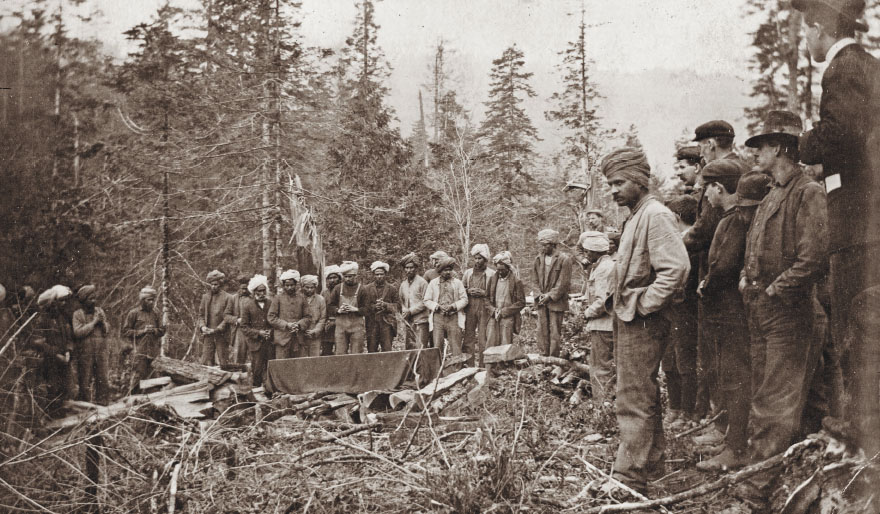
A Sikh cremation ceremony in 1907. See .
Foreword
Tod Inlet and its surrounding area has long been a place of intense interest for many of us. It represents layers of history, layers of human presence, a home place for myriad plants, animals and fungi, a convergence of marine and terrestrial habitats, and a convergence of nature, industry and horticultural beauty. Its SENOEN name, S ID E , translates as Place of the Blue Grouse, reflecting the humannature interface of this remarkable place.
This book presents a story of immense complexity about a relatively small place, at once special and typical, told with clarity and authority by one who knows it intimately. David Gray, with his background as wildlife biologist and heritage consultant, understands what research entails, and has had the imagination and insights to bring together diverse information drawn from human history and natural history into this compelling and fascinating narrative. Who would have thought, when David and his brother, Jamie, uncovered some pig skulls at Tod Inlet as young boys, that their discovery would initiate a lifelong quest to better know and understand this place, its environmental features and its historical richness? His book is a result of that quest, that curiosity ignited all those years ago and brought to fruition over half a century later.
We have known David over most of that time (in Nancys case, as fellow members of the Victoria Junior Natural History group since the early 1960s; for Robert, as friends and fellow students at the University of Victoria), and we are both delighted to see the results of his meticulous search for knowledge and understanding of this unique place. This book, begun as a questioning spark so many years ago, is a perfect gift to Canadians and world citizens of the 2020s. At a time when the knowledge and history of Indigenous peoples are finally being recognized in mainstream societywhen reconciliation is a household word across Canadaand when the histories of those of Asian heritage, including labourers and immigrants, are gaining wider attention, recognition and appreciation, this book about Tod Inlet is right on target.
David chronicles the deep and enduring relationships of the Tsartlip and other W SNE peoples with the inlet and its surrounding lands and waters, which have been their territory since time immemorial. Starting with the archaeological sitesevidence of ancient reliance on the resources of Tod Inlethe then describes more recent occupation and use by the Tsartlip people, and follows with documentation of the surveys and geological assessments that gave rise to the establishment of the industrial cement works and the associated influx of newcomers. The rise and decline of the cement works and nearby settlements, the associated shipping and other transportation, geological and chemical features of cement, links to diverse places and historical events, fishing and hunting activities, and personal experiences are all described in detail, culminating in the replacement of the cement works by the world-famous Butchart Gardens, the establishment of a superb, ecologically diverse provincial park of nearly 3,200 acres, and the revisiting of the long-standing claims of the Tsartlip to their traditional lands.
In his careful and respectful search for information and understanding, along with his own on-the-ground investigations, David interviewed and read letters and accounts from dozens of individuals, not only from the developers and owners of the cement plants and related industries that dominated the area for decades, but from historians, ethnographers and residents and their relatives. One treasure trove of information was a scattering of wet and mouldy papers in the old cement company office in the late 1960s. In particular, he describes the experiences of those who lived in crowded substandard housing and laboured in the quarries, in the factory buildings and on the docks, digging limestone, carrying heavy sacks of cement, making the best out of difficult, perhaps lonely circumstances. Chinese labourers and, later, Sikhs from Punjab and other regions of India, were drawn to the opportunities for earning wages. Some of them stayed for substantial periods, while others moved on quickly, but in the end, the cement plants closed down and most left for good. Davids narrative brings the human side of this fascinating story to life. No longer can anyone think of the workers or their families as faceless statistics; now they have personality and each has a separate story to tell.
It is entirely appropriate that the Royal BC Museum should publish this book, because it integrates the broad spectrum of what makes up BCs heritage, both social and natural, and covers all the areas of research and exhibition encompassed at the museum. Not only is Tod Inlet itself a fascinating place of enduring interest, but, in a sense, this place and its history represents a history of everyplace. It is a microcosm of historical and ecological interactions that could be chronicled for dozens of small communities across Canada and beyond. Reading it, you will not only be informed about Tod Inlet, but moved by the humanity and beauty that are so much a part of this engaging story.
Next page
